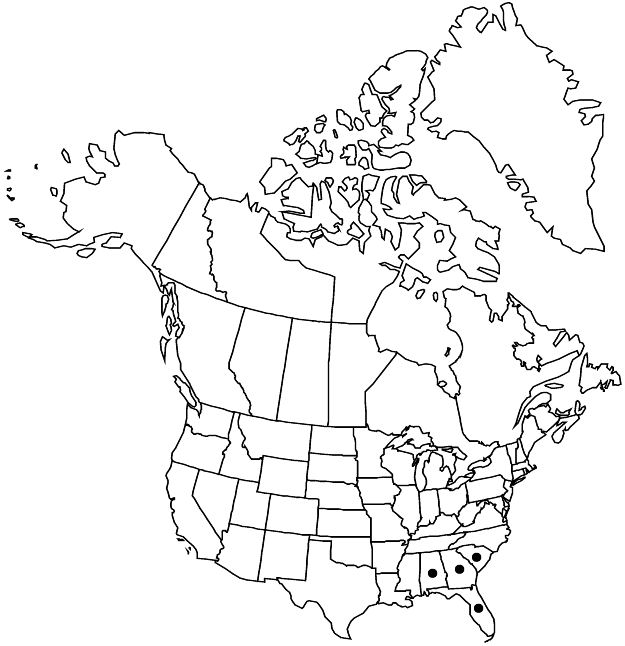Crataegus integra
Biltmore Bot. Stud. 1: 87. 1902.
Shrubs or trees, 20–50 dm, branches ± weeping. Stems: trunk bark ashy gray, rough or scaly; twigs: new growth densely white-canescent, 1-year old purple-brown or blackish, older dark gray, ± stout; thorns on twigs usually absent, slightly recurved, 1-year old blackish or purple-brown, ± fine, 2–3 cm. Leaves: petiole length 10–25% blade, winged distally, densely pubescent, sometimes densely glandular; blade obovate-cuneate to obovate or suborbiculate, 1.5–4 cm (length/width = 1.2–1.7), stiff, ± coriaceous, base gradually tapered, lobes 0 or obscure, margins glandular-denticulate to subentire, veins 2–4(or 5) per side (except smaller leaves), apex ± acute to weakly cuspidate, surfaces pubescent at anthesis, particularly abaxially on veins, glabrescent. Inflorescences 2–4-flowered; branches tomentose; bracteoles oblong-linear, margins sessile-glandular, adaxially thin short-pubescent. Flowers 15–20 mm diam.; hypanthium tomentose; sepals narrowly triangular, 4 mm, margins finely glandular-serrate, abaxially ± tomentose; anthers cream or ivory; styles 3–5. Pomes yellow blushed red to orange-red, suborbicular, (8–)10–12 mm diam., pubescent; sepals spreading; pyrenes 3–5.
Phenology: Flowering mid Mar–mid Apr; fruiting Jul–Aug.
Habitat: Sand plains, dry scrub, and open woodlands
Elevation: 0–200 m
Distribution

Ala., Fla., Ga., S.C.
Discussion
Crataegus integra extends from Alabama to South Carolina and is concentrated in the northern half of peninsular Florida. The species is one of the more common members of ser. Lacrimatae in its main area of distribution.
Crataegus integra is relatively variable in leaf shape and is notable for its almost entire leaf blades, the margins of which often have numerous, barely detectible teeth. This species often displays a considerable variety of leaf size even on one short shoot and has more venous leaves than many species of ser. Lacrimatae. One of the most different entities in the C. integra complex is C. sodalis (= C. dolosa). It has densely glandular petioles, denticulate leaf margins, short-shoot leaves broadly elliptic to broadly obovate, and rather large suborbiculate extension-shoot leaves, and perhaps should be considered part of C. alabamensis. It is concentrated in south-central Alabama. Crataegus integra differs from the C. illudens form of C. lassa in its proportionately narrower and usually shorter leaves, lacking the distinctive cuneate-cuspidate shape of C. lassa but also sometimes obscurely subterminally lobed. Crataegus integra is particularly common in the northern half of peninsular Florida, where C. lassa is rare. Crataegus constans Beadle, with less copious inflorescence tomentum, longer petioles, and proportionately larger and thinner leaves, is perhaps a shade form of C. integra.
Selected References
None.